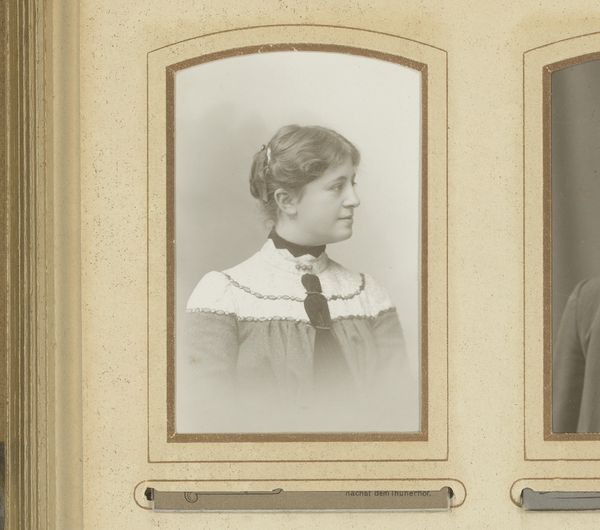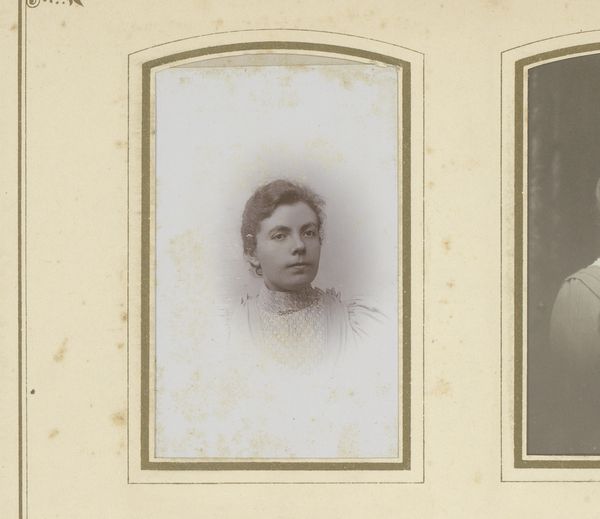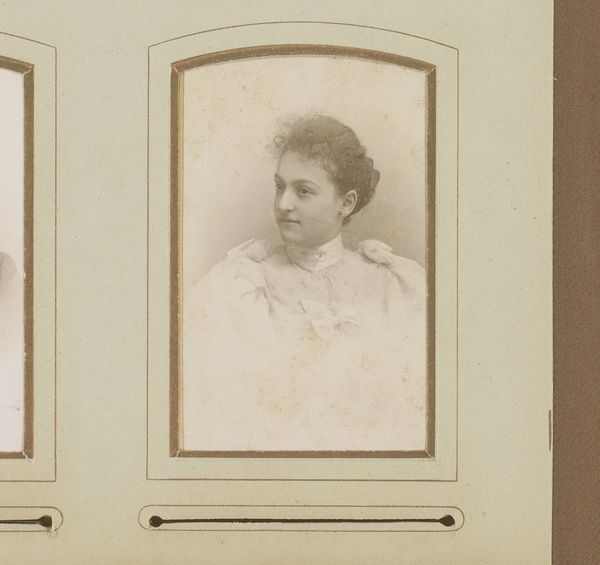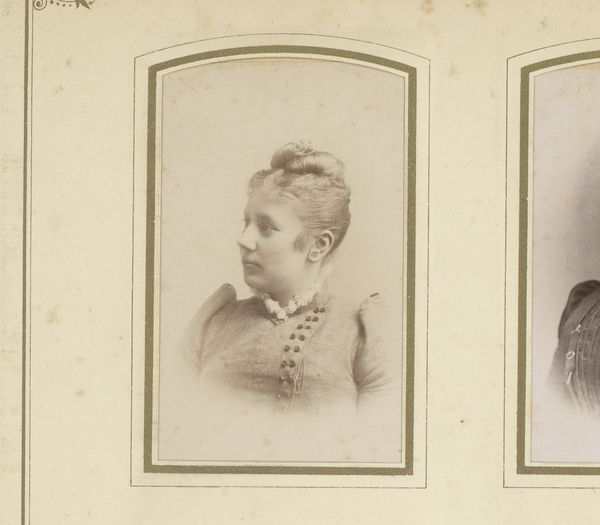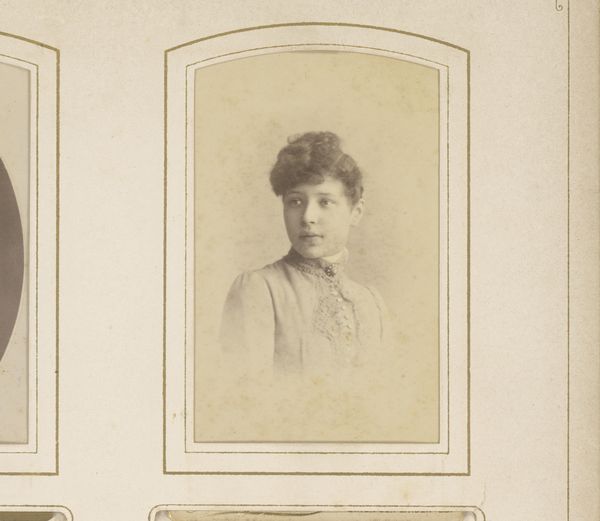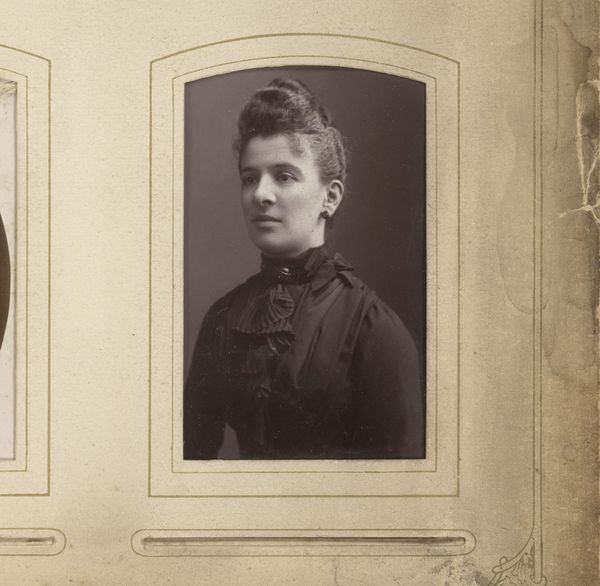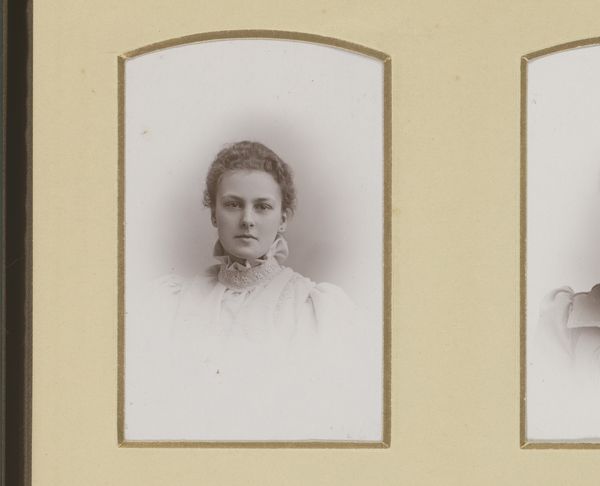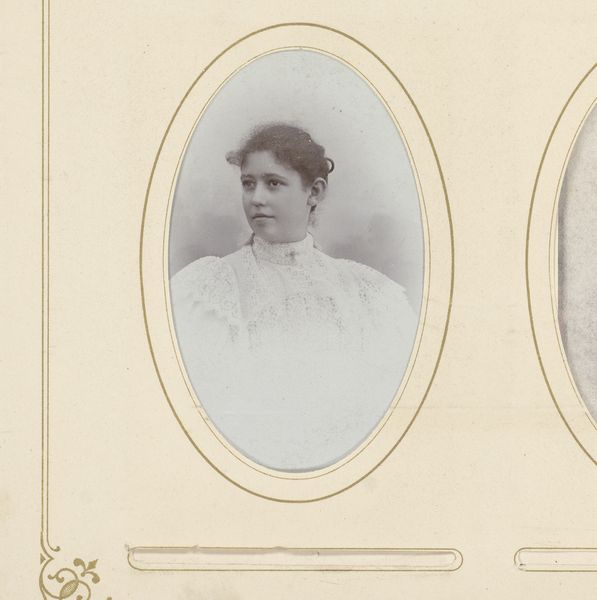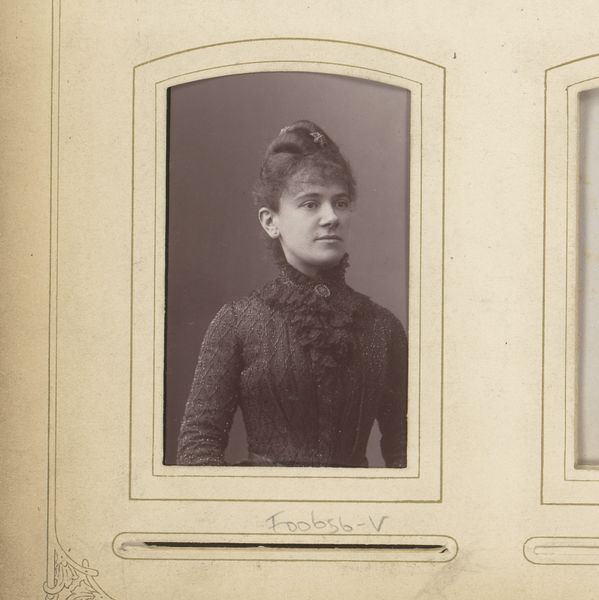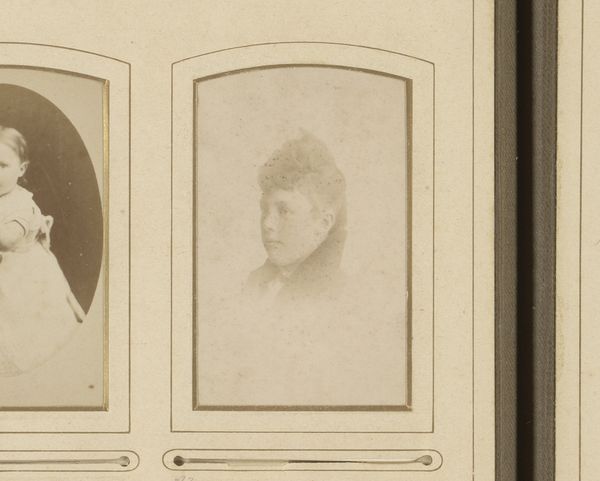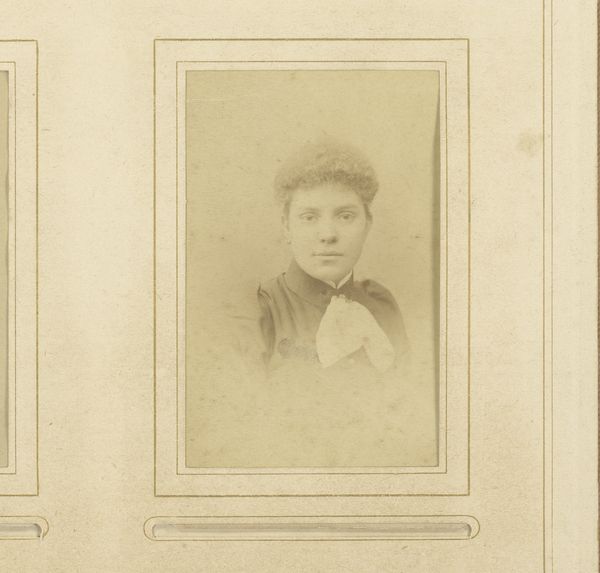
Dimensions: height 87 mm, width 53 mm
Copyright: Rijks Museum: Open Domain
Editor: This gelatin silver print, "Portrait of a Woman, Referred to as Berte Lieze," possibly from 1896, by Jan Frederik Blöte, has such a delicate, wistful quality. What social context informs portraits like this one? Curator: Given the time period and the sitter's attire, these photographs circulated largely amongst a wealthy elite. Photographic portraits became a new way to establish a family's public image and signal their upward mobility during the rapid social changes in the late 19th century. Have you considered how new photographic technologies changed ideas around social status? Editor: I hadn’t thought about the technology playing a role in constructing social standing in this period! Curator: It's more than that, though. The accessibility of photography also started a debate around what made "high art" distinct from mere reproduction, affecting painting styles and, of course, ideas around celebrity and personal legacy. This seemingly simple portrait enters a much broader conversation. Does understanding that change your impression? Editor: Definitely. Knowing that photography offered a means to assert or attain a specific status enriches my understanding. Instead of merely viewing it as an individual portrayal, it embodies a strategic, class-conscious self-presentation. Curator: Precisely. The creation and display of these portraits played a role in constructing identity within a rapidly changing social landscape, shaping cultural memory and social hierarchies. Editor: I now see this piece not just as a portrait of an individual, but also a portrait of an era and its evolving societal values. Thank you. Curator: It’s rewarding to connect personal stories to larger social currents. Thanks for your questions!
Comments
No comments
Be the first to comment and join the conversation on the ultimate creative platform.
